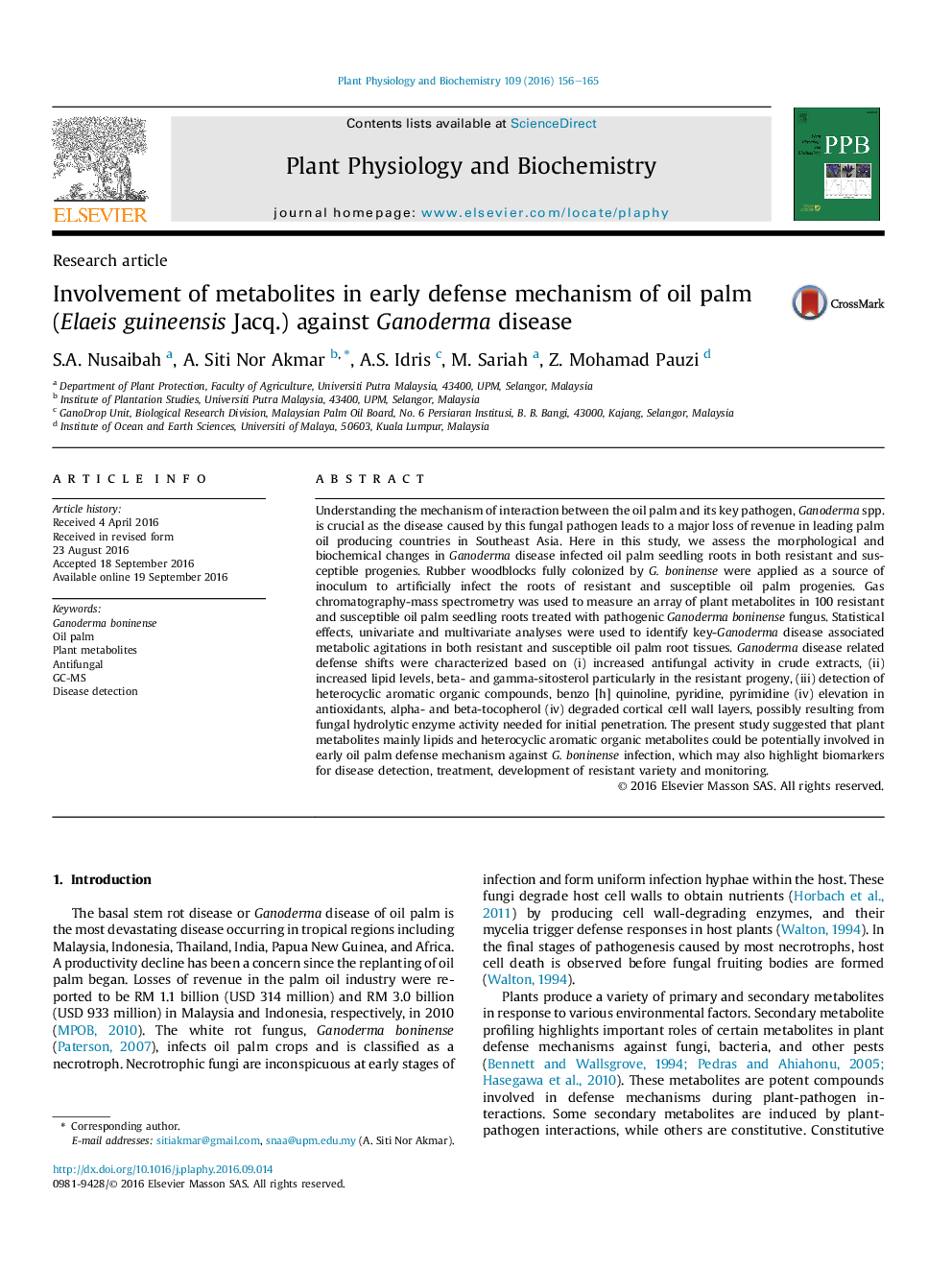| Article ID | Journal | Published Year | Pages | File Type |
|---|---|---|---|---|
| 5515632 | Plant Physiology and Biochemistry | 2016 | 10 Pages |
â¢Lipids and N-heterocyclic aromatic metabolites are involved in early defense mechanism of oil palm.â¢Benzo[h]quinoline may contribute to the antifungal activity of oil palm root extracts.â¢Antifungal activity against G. boninense was detected in infected total root extracts.
Understanding the mechanism of interaction between the oil palm and its key pathogen, Ganoderma spp. is crucial as the disease caused by this fungal pathogen leads to a major loss of revenue in leading palm oil producing countries in Southeast Asia. Here in this study, we assess the morphological and biochemical changes in Ganoderma disease infected oil palm seedling roots in both resistant and susceptible progenies. Rubber woodblocks fully colonized by G. boninense were applied as a source of inoculum to artificially infect the roots of resistant and susceptible oil palm progenies. Gas chromatography-mass spectrometry was used to measure an array of plant metabolites in 100 resistant and susceptible oil palm seedling roots treated with pathogenic Ganoderma boninense fungus. Statistical effects, univariate and multivariate analyses were used to identify key-Ganoderma disease associated metabolic agitations in both resistant and susceptible oil palm root tissues. Ganoderma disease related defense shifts were characterized based on (i) increased antifungal activity in crude extracts, (ii) increased lipid levels, beta- and gamma-sitosterol particularly in the resistant progeny, (iii) detection of heterocyclic aromatic organic compounds, benzo [h] quinoline, pyridine, pyrimidine (iv) elevation in antioxidants, alpha- and beta-tocopherol (iv) degraded cortical cell wall layers, possibly resulting from fungal hydrolytic enzyme activity needed for initial penetration. The present study suggested that plant metabolites mainly lipids and heterocyclic aromatic organic metabolites could be potentially involved in early oil palm defense mechanism against G. boninense infection, which may also highlight biomarkers for disease detection, treatment, development of resistant variety and monitoring.
